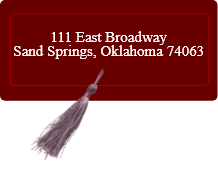
Anesthesia is a very important part of your pets care. It may be needed in an ordinary minor procedure like x-rays to an absolute need in a major surgery that last for several hours. At Rankin Veterinary Hospital PC we utilized several different anesthesia protocols depending on your pet’s physical status and the particular procedure. Dr. Rankin may request pre-anesthesia blood work to assess your pet’s ability to undergo anesthesia prior to surgery.
Most x-ray procedures do not require anesthesia but some animals that are very fractious may require sedation with a tranquilizer in order to get good quality diagnostic radiographs. Ultrasound would be another procedure that may require sedation to perform.
Surgical procedures require general anesthesia. Dr. Rankin uses different protocols tailored to the physical condition of your pet and the type of procedure being done. There are always risks with anesthesia even in a perfectly healthy pet and even more so in a pet suffering from an adverse underlying disease.
General anesthesia may be in the form of a longer acting injectable anesthetic or with a short acting injectable anesthetic then with maintenance of anesthesia with gas anesthetic.
Each of these has various benefits and disadvantages and Dr. Rankin will select the best choice for your pet in order for your pet to recover with little or no complications. Pets are monitored during anesthesia for changes in their vitals that may require adjustments to the anesthesia process.
Recovery times will vary with the type of anesthetic protocol that was used. Long acting injectable agents have a longer period of recovery and a short acting injectable with gas anesthesia has a shorter recovery time. Both have their benefits depending on the health of your pet.
Gas anesthesia will require the placement of an endotracheal tube to administer the anesthetic agent which may stimulate a mild cough for a few days afterwards. Even with long acting injectable anesthesia Dr. Rankin will at times place an endotracheal tube in order to keep the airway open. This is very important in brachycephalic breeds of animals.
Dr. Rankin will give an anti-emetic and a pain medication prior to most anesthesia procedures. Other medications may be used such as atropine to reduce oral secretions or Doxapram which works as a respiratory stimulant.
No one likes to have their pet anesthetized but our goal when that happens is for your pet to awake safely from anesthesia.

Anesthesia is a very important part of your pets care. It may be needed in an ordinary minor procedure like x-rays to an absolute need in a major surgery that last for several hours. At Rankin Veterinary Hospital PC we utilized several different anesthesia protocols depending on your pet’s physical status and the particular procedure. Dr. Rankin may request pre-anesthesia blood work to assess your pet’s ability to undergo anesthesia prior to surgery.
Most x-ray procedures do not require anesthesia but some animals that are very fractious may require sedation with a tranquilizer in order to get good quality diagnostic radiographs. Ultrasound would be another procedure that may require sedation to perform.
Surgical procedures require general anesthesia. Dr. Rankin uses different protocols tailored to the physical condition of your pet and the type of procedure being done. There are always risks with anesthesia even in a perfectly healthy pet and even more so in a pet suffering from an adverse underlying disease.
General anesthesia may be in the form of a longer acting injectable anesthetic or with a short acting injectable anesthetic then with maintenance of anesthesia with gas anesthetic.
Each of these has various benefits and disadvantages and Dr. Rankin will select the best choice for your pet in order for your pet to recover with little or no complications. Pets are monitored during anesthesia for changes in their vitals that may require adjustments to the anesthesia process.
Recovery times will vary with the type of anesthetic protocol that was used. Long acting injectable agents have a longer period of recovery and a short acting injectable with gas anesthesia has a shorter recovery time. Both have their benefits depending on the health of your pet.
Gas anesthesia will require the placement of an endotracheal tube to administer the anesthetic agent which may stimulate a mild cough for a few days afterwards. Even with long acting injectable anesthesia Dr. Rankin will at times place an endotracheal tube in order to keep the airway open. This is very important in brachycephalic breeds of animals.
Dr. Rankin will give an anti-emetic and a pain medication prior to most anesthesia procedures. Other medications may be used such as atropine to reduce oral secretions or Doxapram which works as a respiratory stimulant.
No one likes to have their pet anesthetized but our goal when that happens is for your pet to awake safely from anesthesia.















